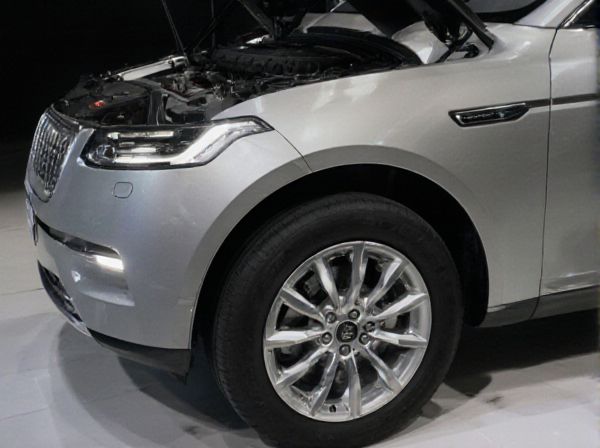
Photo illustration: Beadlock vs Non-beadlock Wheel
Beadlock wheels provide enhanced tire retention by mechanically clamping the tire bead to the wheel, making them ideal for off-road driving and preventing tire slippage at low pressures. Non-beadlock wheels rely solely on air pressure to keep the tire seated, offering a simpler design that suits everyday on-road use. Choosing the right wheel depends on your driving needs and whether you require extra security for extreme terrain or convenience for regular conditions.
Table of Comparison
| Feature | Beadlock Wheel | Non-Beadlock Wheel |
|---|---|---|
| Tire Security | Locks tire bead securely; prevents tire slip | Relies on air pressure to hold tire bead |
| Use Case | Off-road, rock crawling, extreme conditions | Everyday driving, highway, light off-road |
| Air Pressure Flexibility | Allows very low tire pressure without bead loss | Limited; risk of bead unseating at low pressure |
| Weight | Heavier due to locking ring and bolts | Lighter, standard wheel construction |
| Cost | Higher initial cost and maintenance | Lower cost, widely available |
| Maintenance | Requires inspection of locking bolts | Minimal, standard tire checks |
| Safety | Enhanced tire retention under extreme loads | Dependent on proper inflation pressure |
Introduction to Beadlock and Non-Beadlock Wheels
Beadlock wheels feature a mechanical ring that clamps the tire bead securely to the wheel, preventing it from slipping during low tire pressure or extreme off-road conditions. Non-beadlock wheels rely on the tire's air pressure and bead seat design to maintain tire retention, suitable for standard on-road and moderate off-road use. This fundamental difference impacts wheel performance, safety, and application in various driving environments.
What Are Beadlock Wheels?
Beadlock wheels feature a clamping ring that bolts the tire bead securely to the wheel, preventing it from slipping off during extreme off-road conditions or low tire pressures. Unlike non-beadlock wheels, which rely solely on tire pressure to hold the bead in place, beadlock wheels enhance safety and performance by physically locking the tire in position. These wheels are commonly used in rock crawling, mudding, and off-road racing where tire retention under stress is critical.
What Are Non-Beadlock Wheels?
Non-beadlock wheels feature a traditional design where the tire bead is secured by the wheel rim without mechanical clamps, relying on tire pressure to maintain the seal. These wheels are commonly used for everyday driving due to their lighter weight, easier tire mounting, and cost-effectiveness compared to beadlock wheels. Non-beadlock wheels provide sufficient grip and durability for standard off-road and on-road conditions but may risk bead separation under extreme low-pressure off-roading scenarios.
Key Differences Between Beadlock and Non-Beadlock Wheels
Beadlock wheels secure the tire bead to the rim using a mechanical ring, preventing tire slippage during extreme off-road conditions and low tire pressure situations, whereas non-beadlock wheels rely on tire pressure and rim design for retention. Beadlock wheels offer enhanced safety and performance for rigorous terrains but tend to be heavier and require more maintenance compared to non-beadlock wheels, which are lighter, simpler, and more common for everyday driving. The increased traction and stability from beadlock wheels come at the cost of higher cost and potential road-use restrictions due to legal regulations in some regions.
Performance Benefits of Beadlock Wheels
Beadlock wheels provide superior off-road performance by securely clamping the tire bead to the rim, preventing tire slip during low-pressure driving and aggressive maneuvers. This ensures enhanced traction, improved control, and reduced risk of tire bead separation on rough terrains, making them an essential choice for serious off-road enthusiasts. In contrast, non-beadlock wheels rely solely on air pressure to maintain tire position, limiting their effectiveness in extreme conditions.
Advantages of Non-Beadlock Wheels
Non-beadlock wheels offer a significant advantage in weight reduction, improving overall vehicle efficiency and fuel economy. Their simpler design enhances ease of installation and maintenance, making them more user-friendly for everyday driving conditions. Non-beadlock wheels also provide a smoother ride by allowing slight tire flex, which improves traction and comfort on various road surfaces.
Off-Road Applications: Beadlock vs Non-Beadlock
Beadlock wheels provide superior tire retention for off-road vehicles, preventing tire bead separation under low tire pressure conditions commonly used in rock crawling and extreme terrain. Non-beadlock wheels rely on tire pressure and rim design for retention, offering easier maintenance but less security in aggressive off-road scenarios. Off-road enthusiasts prioritize beadlocks for enhanced traction and safety on uneven surfaces, while non-beadlocks suit moderate trails with less risk of tire slippage.
Legal and Safety Considerations
Beadlock wheels provide enhanced tire retention by mechanically clamping the tire bead to the rim, significantly reducing the risk of tire slippage during extreme off-road conditions, which can improve safety. However, many regions have legal restrictions or outright bans on beadlock wheels for on-road use due to potential liability concerns and stricter vehicle safety standards. Non-beadlock wheels comply with most road safety regulations worldwide and are generally safer for regular driving, but they may be prone to tire bead unseating under low tire pressure or severe off-road stress.
Maintenance and Durability Comparison
Beadlock wheels offer superior durability by securely clamping the tire bead, preventing it from slipping under low pressure or extreme off-road conditions, which reduces the risk of tire damage and improves maintenance intervals. Non-beadlock wheels require more frequent tire pressure checks and risk bead slippage, potentially causing damage that necessitates more regular repairs or replacements. Maintenance of beadlock wheels involves periodic bolt torque checks, while non-beadlock wheels depend heavily on tire condition monitoring and proper inflation for longevity.
How to Choose the Right Wheel for Your Vehicle
Choosing the right wheel for your vehicle depends on factors such as driving conditions, wheel durability, and safety preferences. Beadlock wheels provide superior tire retention under extreme off-road conditions, preventing tire slippage and bead separation during low tire pressure scenarios. Non-beadlock wheels offer easier maintenance, lighter weight, and better on-road performance, making them suitable for everyday driving and moderate off-road use.
 caratoz.com
caratoz.com